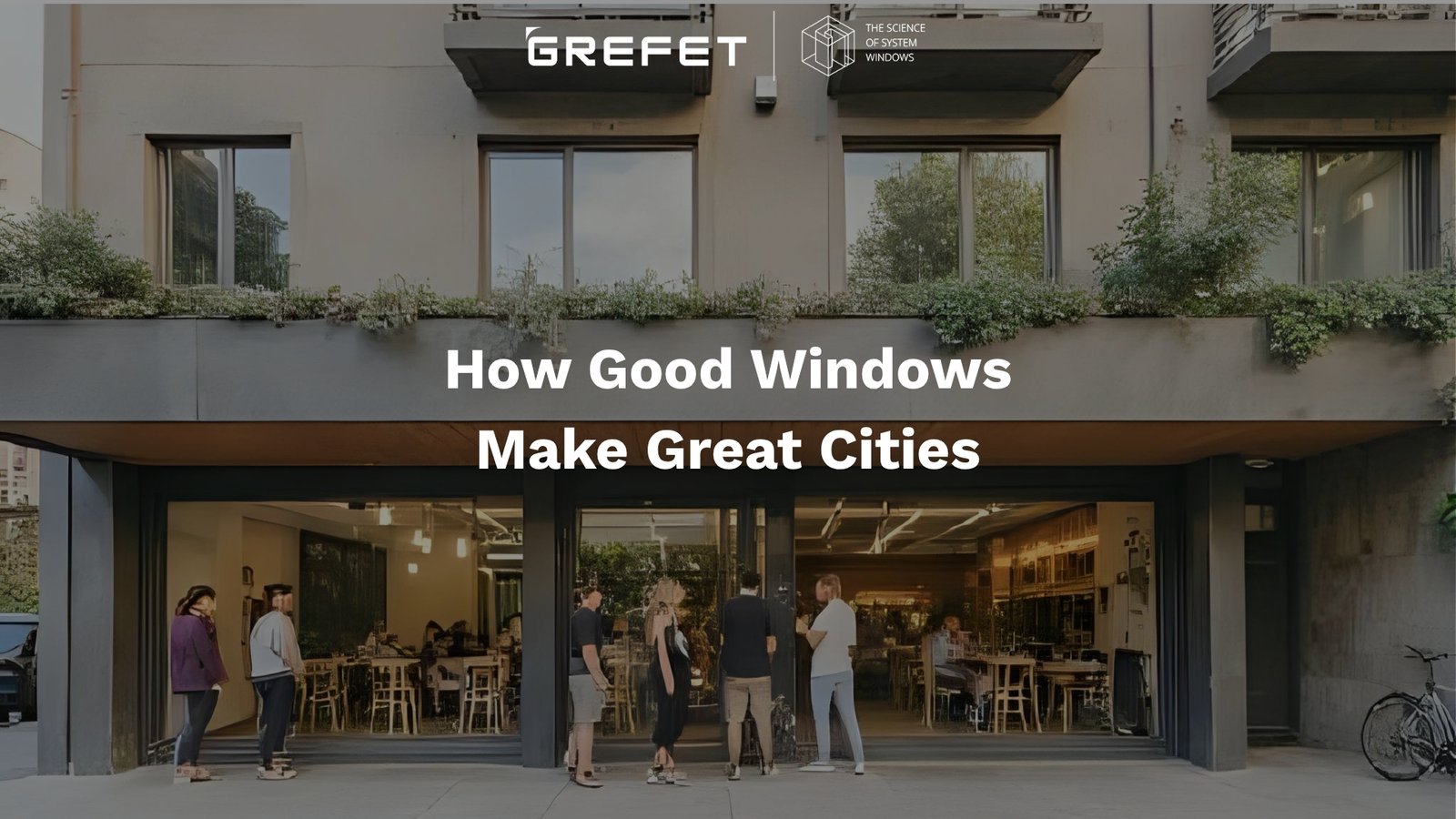Cities are defined by their architecture, but what often goes unnoticed is how much of that architecture is glass and frame. How good windows make great cities isn’t just a design statement, it’s an argument for how better fenestration can reshape the urban experience. At GREFET, we believe that when windows are designed thoughtfully, they don’t just improve a building, they elevate the quality of life within the city itself.
Let’s explore how system-based aluminium windows influence comfort, sustainability, and the identity of modern Indian cities.
1. Windows Shape the Character of a City
Stand on any skyline, whether it’s Mumbai, Bengaluru, or Ahmedabad, and you’ll notice a rhythm of glass and geometry. The scale, shape, and style of windows determine how light reflects off buildings and how people experience their surroundings.
Good windows humanize urban design. They create patterns of openness, rhythm, and proportion that bring coherence to cityscapes. Slim aluminium systems, like those designed at GREFET, allow architects to express lightness and transparency, giving modern buildings a sense of visual calm amidst urban density.
A well-designed window is more than a cut-out on a wall. It’s a language that connects private spaces to public life, letting the city breathe through its architecture.
2. The Comfort Equation: Light, Air, and Acoustics
When you think of great cities, you think of comfort, not just convenience. And that comfort starts indoors. Good windows manage natural light, ventilation, and sound insulation in balance. Poorly designed openings can overheat a space, leak air, or let in constant noise. Architect-grade aluminium systems counter that through performance-based design, multiple chambers for insulation, precision gaskets for sealing, and controlled openings for ventilation.
At GREFET, every system is tested for air, water, and acoustic performance, ensuring that even in chaotic city environments, interiors stay peaceful. Because when buildings breathe well, cities live well.
3. The Sustainability Factor
Here’s what’s often overlooked, windows play a huge role in a building’s energy footprint.
High-performance aluminium systems with double or triple glazing can cut heat gain drastically, reducing the load on air-conditioning. In a tropical country like India, that’s not just energy savings, it’s urban sustainability in action.
When multiplied across hundreds of buildings, good windows reduce the city’s overall energy demand, making cooling grids more efficient and carbon emissions lower.
GREFET systems are designed for thermal efficiency and long-term recyclability, contributing to the broader sustainability goals of smart urban development. Aluminium, being infinitely recyclable, supports circular construction practices that the cities of the future will depend on.
4. Noise: The Invisible Pollution Cities Ignore
Sound defines how liveable a city feels. Windows are the first barrier between a home and its surroundings. In high-density areas, noise can affect health, concentration, and sleep.
Architect-grade systems, with the right glass pairing and gasket design, reduce sound transmission dramatically. Whether it’s the honking streets of Delhi or the rail corridors of Mumbai, good window systems create acoustic sanctuaries, quiet interiors that make city life bearable and balanced. For GREFET, urban well-being starts with silence.
5. Windows and the Social Life of Buildings
Cities thrive on connection, between people, spaces, and light. Windows are where that connection happens. A street-facing window frames daily life. A high-rise corner window captures the city skyline. These views and reflections form the collective memory of urban living.
When architects specify slimmer, cleaner, and more durable systems, they don’t just achieve aesthetics, they make spaces more open, inviting, and human.
At GREFET, we design for visual continuity, the ability of a window to dissolve boundaries between inside and outside, allowing the architecture to participate in the life of the city.
6. How Aluminium Systems Enable Urban Progress
The evolution of aluminium systems has changed what’s possible in city architecture. From high wind resistance in coastal buildings to precision sealing in dusty inland regions, system-based aluminium windows are built to perform across climates and scales.
Cities that invest in better window systems gain:
- Energy-efficient buildings that lower power consumption.
- Healthier interiors with natural light and ventilation.
- Aesthetic harmony through consistent design language.
- Reduced maintenance and longer building lifespans.
That’s not a small impact, that’s infrastructure evolution.
7. The GREFET View: Windows as Urban Responsibility
At GREFET, we see window systems not just as architectural elements, but as urban commitments. Every system we design considers how it will age, how it will perform, and how it will contribute to its environment.
Our work with architects and fabricators across India has shown one thing clearly, cities improve when every building performs better. And that starts with the basics: the right window system, installed the right way, for the right reason.
The Takeaway
How good windows make great cities is more than a design philosophy, it’s an urban necessity.
When windows are engineered for performance, built for endurance, and detailed for beauty, they influence how cities look, feel, and function.
At GREFET, we’re building that future, one aluminium system at a time. Because a great city doesn’t just rise from its skyline; it grows from every frame that lets the light in.


